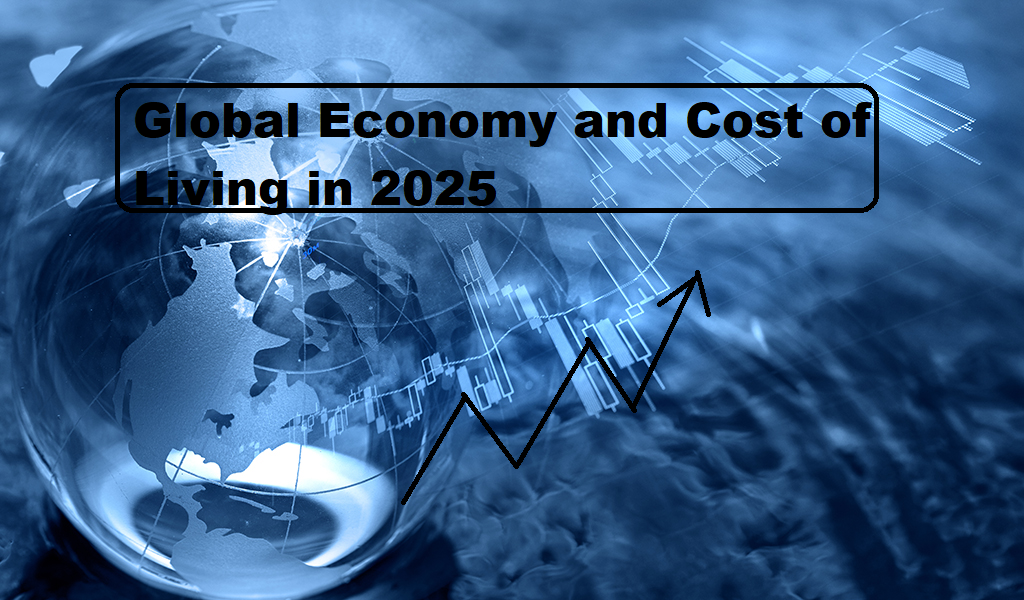In 2025, few topics are more relevant or widely discussed than the global economy and cost of living. With inflation, technological disruption, housing affordability, and shifting job markets impacting people across every continent, the financial landscape has changed dramatically. The global economy and cost of living are now deeply intertwined with geopolitical events, digital innovation, environmental challenges, and consumer behavior. Understanding this complex relationship is crucial for individuals, families, and businesses navigating life in today’s interconnected world.
This year, the global economy and cost of living have reached a critical turning point. As economies attempt to stabilize after years of volatility—fueled by pandemic aftershocks, wars, and energy market fluctuations—citizens around the world are feeling the effects directly in their wallets. From skyrocketing rent in urban areas to fluctuating grocery bills and healthcare costs, the daily impact of economic decisions is impossible to ignore.
This blog post dives into the most important updates and forecasts shaping the global economy and cost of living in 2025. Whether you’re planning your personal budget, considering a career move, or simply trying to stay informed, this comprehensive guide will provide the insights you need to better understand and navigate the evolving financial reality of 2025.
The Global Economy in 2025: A Landscape of Transition
In 2025, the global economy is undergoing significant change. While the world is rebounding from the aftershocks of pandemic-era disruptions and supply chain issues, new concerns like AI-driven labor displacement, regional conflicts, and rising national debts continue to impact economic growth.
1. Slowed but Stabilizing Growth
Global GDP growth is slower than pre-pandemic years but more stable than the volatile early 2020s. Economies in Asia, particularly India and Southeast Asia, are experiencing robust growth, while Western countries are focusing on debt management and inflation control.
2. Digital Transformation and AI Impact
AI technologies are reshaping industries from manufacturing to finance. While boosting productivity, automation is also displacing certain job sectors. This tech-driven evolution is a defining force behind changes in the global economy and cost of living.
3. Energy Market Volatility
Energy prices remain unstable due to a combination of global demand, climate regulations, and geopolitical events. Transitioning to renewable energy sources is underway but contributes to short-term inflation in utility and transportation costs.
Cost of Living in 2025: What’s More Expensive—and What’s Not
The cost of living in 2025 varies dramatically across regions but shows common global patterns. Urban areas remain expensive, particularly in housing, while digital services and remote work have driven lifestyle shifts in both developed and emerging markets.
1. Housing and Rent Prices
Housing affordability is one of the top issues affecting the global economy and cost of living. Major cities like New York, London, and Tokyo remain prohibitively expensive, while smaller urban centers are seeing price hikes due to remote workers relocating.
2. Food and Groceries
Climate-related disruptions and energy costs continue to impact agriculture, driving up food prices globally. Staple foods and fresh produce are costlier, especially in import-dependent countries.
3. Healthcare and Insurance
The cost of healthcare has risen in both private and public sectors. In the U.S., premiums and out-of-pocket expenses are up, while in Europe, stretched public systems are leading to longer wait times and increased private insurance demand.
4. Digital and Subscription Services
On the positive side, many digital services, including cloud storage, entertainment subscriptions, and virtual learning, have become more affordable, adding value to modern lifestyles. This shift offers some relief in the broader global economy and cost of living equation.
Regional Overview: Who’s Paying More in 2025?
United States
The U.S. economy remains resilient but is grappling with high housing costs, student debt, and inflation. While job growth is steady, wage stagnation affects middle-income households’ purchasing power.
Europe
The European Union is managing inflation through tight monetary policies. The cost of living varies significantly—cities like Paris and Amsterdam are expensive, while Eastern Europe remains more affordable.
Asia
Countries like India, Vietnam, and Indonesia are benefiting from global manufacturing shifts and digital economy growth. China is stabilizing after years of real estate and tech sector overhauls.
Africa and Latin America
These regions face high inflation, political instability, and currency fluctuations, which greatly influence the global economy and cost of living locally. However, innovation in fintech and agriculture is showing promise.
Factors Shaping the Global Economy and Cost of Living in 2025
- Climate Change: Droughts, floods, and extreme weather increase food and housing costs.
- Geopolitics: Conflicts and trade restrictions lead to supply chain disruptions.
- Interest Rates: Central banks are balancing inflation control with economic growth.
- Global Migration: Urbanization and cross-border mobility affect labor markets and housing demand.
- Technology: AI, robotics, and digitization both lower some costs and drive others up due to transition expenses.
Final Thoughts on the Global Economy and Cost of Living in 2025
The global economy and cost of living in 2025 present a complex, shifting landscape that affects every aspect of our lives—from the price of groceries and rent to job opportunities and financial planning. While some regions are experiencing technological growth and increasing affordability in digital services, others continue to face rising inflation, unstable currencies, and limited access to basic necessities.
As governments work to stabilize national economies and adapt to technological disruptions, individuals must also adjust their financial strategies. The adoption of AI, remote work, and digital finance is reshaping labor markets and spending habits. Meanwhile, climate-related challenges and geopolitical tensions are adding new pressures to already strained systems.
Understanding the global economy and cost of living is no longer optional—it’s essential for making informed decisions, whether you’re saving, investing, relocating, or building a career. By staying informed about global trends and regional variations, you’ll be better prepared to adapt, thrive, and take control of your financial future.
For more updates, expert insights, and real-world analysis of the global economy and cost of living in 2025, stay connected with BlogHear.com—your trusted source for navigating tomorrow’s economic realities.
How Do I Start an Amazon Affiliate in 2025? A Complete Step-by-Step Guide




